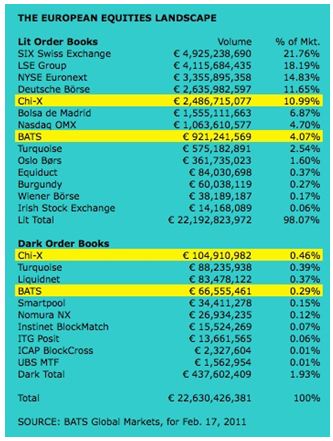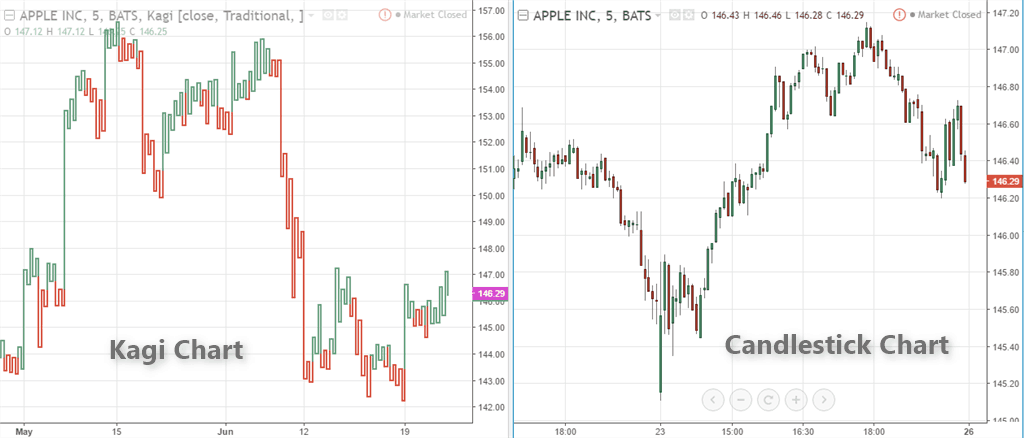18 Nov Understanding the Audit Risk Model
Contents:

Explain the function of market makers, how they operate, and what risks they face. What is the difference between sampling risk and non-sampling risk? We’ve updated our privacy policy so that we are compliant with changing global privacy regulations and to provide you with insight into the limited ways in which we use your data. To be able to apply the aforementioned formula, let’s uncover what each type of risk involves.
Conducting the audit properly and efficiently is essential for the auditor to provide a correct audit opinion and issue an audit report. The audit report, as an assurance report given by a third-party auditor, can be adopted to confirm whether the financial position, operations, and cash flows of the audited company meet the legal requirements. However, even when not solved mathematically, familiarity with the model makes the following relationship clear to hold audit risk to a specified level. The higher the assessed levels of inherent and control risks, the lower the acceptable level of detection risk will be. For a specified level of audit risk, there is an inverse relationship between the assessed levels of inherent and control risks for an assertion and the level of detection risk that the auditor can accept for that assertion.
Examples of Inherent Risk
Therefore, judging the level of audit risk-based only on the results of a single model is one-sided and inadequate, and an integrated model is also needed to make judgments, fusing the outputs of the three single models into one result. Random forest is an algorithm for classification and recognition by using combinatorial decision trees. Decision trees are named after the similarity of their images to the root branches of real-life trees. The decision tree takes the classification result as the root node and extends different nonleaf nodes based on the probability of occurrence of an attribute value, using a certain attribute value as a threshold. Therefore, it can include all attribute characteristics and thus determine the specific classification criteria under each classification result. Decision trees are one of the common methods used in the fields of project decision making and risk assessment.
- Finally, we urge more research on the role of auditor and client competency in driving audit quality.
- Nonetheless, the equation is a useful way to conceptualize how an audit program should be constructed to collect a sufficient amount of appropriate audit evidence.
- By using the audit risk model, auditors can effectively plan and execute their audits.
Inherent risk is essentially the perceived systematic risk of material misstatement based on the firm’s structure, industry, or market it participates in. Interviewing the entity’s management, internal auditors, directors, the audit committee, and other employees is a required audit process that can bring auditors up to date on changes in the business and the industry. Issues to discuss include selection of accounting principles; susceptibility to errors and fraud, including known or suspected fraud; and how management controls and monitors fraud risks. Where the auditor’s assessment of inherent and control risk is high, the detection risk is set at a lower level to keep the audit risk at an acceptable level. Lower detection risk may be achieved by increasing the sample size for audit testing. Conversely, where the auditor believes the inherent and control risks of an engagement to be low, detection risk is allowed to be set at a relatively higher level.
Understanding the Risk Environment
The audit risk model also provides room for certain key yet intangible skills that the auditor can bring to the table. For example, auditors may have experience in similar businesses and may know the common faults or weaknesses in those businesses. The model allows the auditor to focus on certain tests based on his own history, ideas and experiences in the field. The client is said to demonstrate a high control risk of the controls if a specific assertion does not operate effectively or if the auditor deems that testing the internal controls would be an inefficient use of audit resources. A key step for auditors to consider is to try to understand those measures to which management or financial statement users might be sensitive. For example, measures used to determine management compensation or analysts’ ratings might place pressure on management to manipulate financial results.

The Audit Risk Model – Understanding Foundational Principles is a critical foundational course. Financial statement auditors are engaged to provide reasonable assurance that financial statements are not materially misstated, whether due to fraud or error. Professional standards require auditors to obtain sufficient and appropriate evidence to support that opinion. It is critical for effective and efficient auditors to have a clear understanding of all the important elements and concepts related to properly identifying, evaluating, and deciding how to respond to risk in a financial statement audit.
Responsibilities of Audit Firms for Quarterly Financial Statements
Control risk is the risk that potential material misstatements would not be detected or prevented by a client’s control systems. When there are significant control failures, a client is more likely to experience undocumented asset losses, which means that its financial statements may reveal a profit when there is actually a loss. In this situation, the auditor cannot rely on the client’s control system when devising an audit plan. Accordingly, the auditor controls audit risk by adjusting detection risk according to the assessed levels of inherent and control risks.
- Forward-looking financials by nature rely on management’s estimates and value judgments, which pose an inherent risk.
- Sample data preprocessing is the adoption of certain technical means to normalize data that do not meet experimental specifications.
- The auditor first assesses the inherent risk, which is high due to the complex and volatile nature of the industry, as well as the company’s history of noncompliance with regulations.
- To understand the audit risk model, consider the tale of a villain.
Accounting estimates are approximations of financial statement numbers and are often included in financial statements. Order to deceive financial statement users by influencing their perceptions about the entity’s performance and profitability. Wang, “Design of financial big data audit model based on artificial neural network,” International Journal of System Assurance Engineering and Management, vol. S. V. Arzhenovskiy, A. V. Bakhteev, T. G. Sinyavskaya, and N.
Lastly, what is a deposit slipes can choose to use an automation software that stores transaction history and can provide audit trails. This way, an auditor can receive documentation of everything that occurred up to the point of their audit. If there are any mistakes or misstatements, it’ll be easier for both the organisation and auditor to pinpoint anything that’s not right and correct it by reviewing the data’s past. Financial performance – an auditor will take into account key performance indicators , trends, forecasts, budgets, revenue growth, variance analysis and more. While this is a lot of information to manage, businesses that utilise automation software can have this data ready to go at a moment’s notice.
Audit risk:
Although the formula is written like a mathematical equation, it’s not able to be objectively assessed. Instead, auditors use their professional judgement, experience and research to determine the levels of each type of risk. They can then better understand the relationship of each category of risk to make sure that the overall audit risk is within a tolerable limit. This study examines the relation between client business strategy and the audit quality of industry specialists. Our results remain valid after controlling for self-selection bias and are robust to alternative measures of discretionary accruals, auditor industry specialization, and strategic deviance. Overall, our findings suggest that the effect of auditor industry specialization is not homogeneous across clients, and client characteristics (e.g., client strategy) moderate the relation between auditor industry expertise and audit quality.
Your Employees Are Using ChatGPT and Other LLMs: Risks and … – Clark Hill
Your Employees Are Using ChatGPT and Other LLMs: Risks and ….
Posted: Fri, 14 Apr 2023 13:36:48 GMT [source]
Results showed that the previously assessed risk substantially increased the explanatory power of the models in accounting for variation in the subsequently assessed components. The results support the notion that audit risk components are assessed conditionally. Thus, they provide a defense for practitioners’ claims that they are appropriately using the model and give guidance to future research on the audit risk model. When audit staff cannot practice the audit works according to the acknowledged audit criteria and submit wrong audit opinions , it becomes audit failure. Khurana and Raman also indicated that audit failure does not necessarily lead to business failure; however, after business failure, the investors and creditors of the enterprises would pay attention to the existence of the audit failure. For every audit case, the audit staff carried the audit risk and the possibility of submitting wrong opinions.
Control Risk
This research mainly introduces BP neural networks, support vector machines, and random forest algorithms to conduct data mining. Furthermore, the audit model based on the three data mining algorithms can be constructed. However, due to the limitation of them, this study also integrates the three algorithms.

It can discover new, hidden, or unforeseen patterns or activities in data in an automated way, generally without the human element. These patterns or activities are specific data hidden in large databases, data warehouses, or other large stores of information. Through the information contained in data warehouses, data mining can uncover issues that auditors may not have previously focused on. As there are many algorithms in the field of data mining, the selection of the right algorithm plays an important role in the effectiveness of data mining and will directly influence the auditor’s decision.
The audit risk model indicates the type of evidence that needs to be collected for each transaction class, disclosure, and account balance. It is best determined during the planning stage and only possesses little value in terms of evaluating audit performance. Inherent risk is not always easy to spot, particularly compared to the other main two audit risks, and increases substantially in business sectors where transactions are open to a substantial amount of judgment and approximation.
Audit teams are concerned with fraud only as it affects the financial statement. Audit teams are not responsible to detect all fraud but are responsible to detect cases where fraudulent activity results in materially misstated financial statements. Fraud risk factors relate to both misstatements arising from fraudulent financial reporting and misstatements arising from misappropriations of assets. A very common reason cited for falsifying financial statements is so a company can meet its earnings projections either provided by management or set by financial analysts.
Thus, expressions of the https://1investing.in/s of inherent, control, and detection risk pertain to individual assertions at the accounts balance level, not to the financial statements taken as a whole. The only risk that auditors can actually act directly upon is detection risk. This means that if control risk and inherent risk are high, they’ll have to adjust their process to focus on lowering detection risk.


Sorry, the comment form is closed at this time.